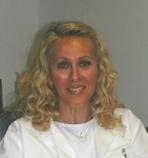By Dr. Annalee Kitay
Children who have learning difficulties or children who are exceptional or neuro-developmentally challenged (or both), in one intellectual form or another, are characterized by the fact that they do not learn in ordinary ways. These children are usually given conventional help and an effort is made to support them in coping with the educational and emotional problems arising from the disabilities. Up until now, there has been no generally accepted means of dealing with the causes of the neurological processing disorder.
Neural Organization Technique is a protocol that addresses the neurological processing disorder by correcting structural and physiological faults, allowing the appropriate signals to be sent to the brain, and reorganize the way correct information is then transmitted in the body. Neural Organization Technique is a very powerful tool when used to help children with a wide range of neuro-developmental disorders.In the area of learning disabilities, a pilot study was done examining the application of Neural Organization Technique. The study was done by a Chiropractic physician, a special needs consultant, an educational psychologist, and a research sociologist. The results were so positive that "CONCERN", a national children's journal in
following excerpts from the study: "Before the Neural Organization Technique, the children were given the Vernon Spelling Test, the Edinburgh Reading Test, and the Wechsler Intelligence Scale for Children (WISCO Revised Form). After the Neural Organization Technique application, they were retested, using the same procedures. The children all showed significant improvement in Full Scale IQ with significant gains in IQ points.
Some of the gains made were particularly remarkable. For example, a fifteen-year-old child achieved a ten-month gain in spelling. It is very difficult for older children to achieve a gain, especially to this large degree. There were also substantial gains made in reading skills, ranging from12 months to 49 months.
On the whole, the results are extremely positive. Some of the most frequently mentioned changes were increase in confidence, being more curious and questioning, more eager to learn and do new things, improved ability to communicate- more talkative, improvements in writing, spelling and reading, improvements with relationships within family and other people and becoming more mature.
Other changes mentioned include becoming more organized, able to coordinate thinking and actions, finding it easier to remember, more skilled in particular sports, increased physical strength and fitness, better ability to see and focus, and neater presentation of school work.
All the children in the study made gains to some degree on one or more of the tests. The majority made progress that was assessed as statistically significant in all areas. The children's progress was achieved during a period of only six months. In a short time, it is known that children with these learning disabilities generally show little to no improvement in
intellectual functioning or in spelling and reading skills. These results indicate that Neural Organization Technique was the major factor in enabling these children to make such exceptional gains.
Learning disabilities as well as other neurological disorders may be the result of improper signaling from the body or from outside sources. This improper signaling causes a break in the normal flow of information to the brain, creating disorganization in the system. The brain may then redirect inappropriate Physiological reactions. The Neural Organization Technique is a noninvasive protocol that has be used with great success that is dependant on the individual and the neurological disorder.
Dr. Annalee Kitay is a chiropractic physician who uses Neural Organization Technique, along with nutritional support to aid children and adults with Neuro-developmental Disorders. She sees patients by appointment at Alternatives in Healthcare,






